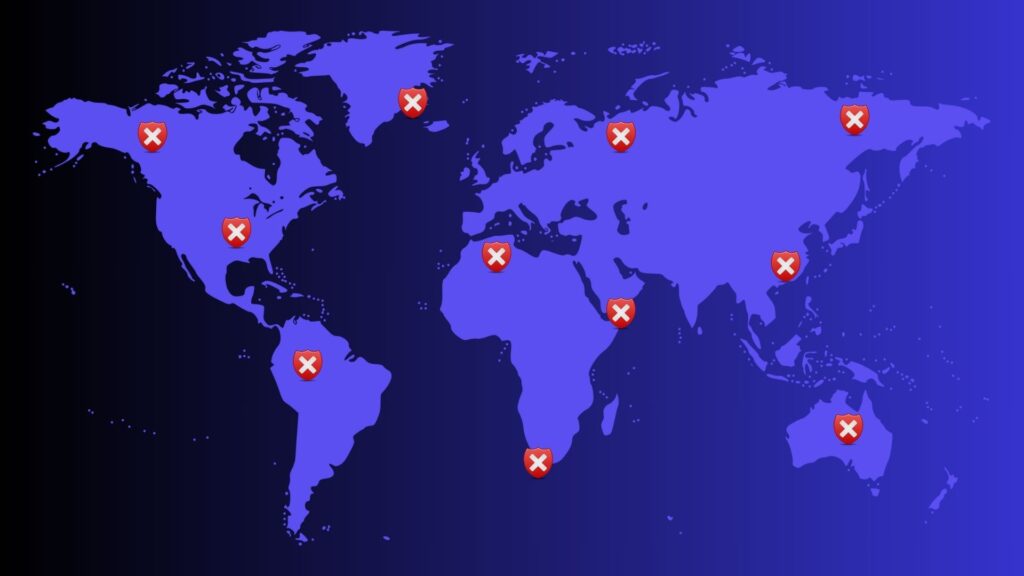The internet is filled with legitimate websites, but there are also many fraudulent websites specifically designed to steal your personal information or scam you. Learning how to identify secure websites can help you to browse safely as well as avoid becoming the next victim of a cyberattack.
We have compiled a list of nine tips that you can use to help you stay secure online.
9 Tips to help you identify secure websites
1. Check for HTTPS
HTTPS stands for Hypertext Transfer Protocol Secure and is used to show that a website is using encryption to secure the data between your browser and the website. This is important as it ensures that your sensitive information, such as your password or credit card information, is encrypted and not easily accessible by hackers.
How you can spot it:
- Look for the “https:” at the start of the URL or website name.
- There will be a padlock icon in your browser’s address bar.
These tips will help you identify secure websites. If you come across a website that is only using http, know that it does not have encryption and that you should not enter personal information on the website.
2. Look for the SSL Certificate
SSL stands for Secure Socket Layer which is a certificate that authenticates a website’s identity and enables encryption.
How you can spot it:
- Check for the padlock icon in the address bar.
- Check the certificate details to ensure they are valid and trusted.
The most common way to identify the status of the certificate is when you visit the website and there is a “not secure” warning in the browser. In some instances, a warning will be displayed that the website is not secure, and you will be promoted to confirm if you still want to proceed to the website.
3. Check the URL
The URL is the full name of the website. Cybercriminals will often create fake websites and use URLs that are similar to the URL of a legitimate website.
How you can spot it:
- Check the spelling of the domain name or website name in the URL. A simple example is when a fake URL uses a “0” instead of “O”, like “will0wbesecure” instead of “willowbesecure”.
- Try to avoid clicking links in unfamiliar emails. You can hover over the link to check the actual URL.
You should enter the website’s name directly in your browser whenever you can, to ensure that you are visiting the correct website.
4. Do your research
If you are uncertain about a website or you have not heard of it before, check the reviews and online reputation of the website to put your mind at ease.
What you can do:
- Using your favourite search engine, enter the website’s name + “scam” or “reviews”.
- Check if there are any contact options on the website. Legitimate websites will have ways to contact them, such as a contact form.
5. Evaluate the website’s design and content
Scammers will often create fake websites that are poorly designed or consist of strange content.
How you can spot it:
- Check the website for typos or grammatical errors.
- Take note of inconsistent branding or outdated website design.
If the website looks like it is from the 00s then it’s probably a website that you may need to reconsider visiting.
6. Pop-ups and suspicious ads
Sometimes there can be too many ads. Secure websites will not bombard you with excessive ads or pop-ups.
What you can do:
- Try not to click on pop-ups requesting personal information.
- Consider using an ad-blocker to reduce your risk of encountering malicious ads.
7. Check secure payment verification
We are all familiar with online shopping which requires you to enter your payment information. So, you need to be certain that the website is safe to enter your details.
What you can do:
- Check for the https and valid SSL certificate before entering your payment information.
- Look for trusted payment processors like PayPal or Stripe before attempting to make a purchase.
There are many legitimate payment processors available so check the ones that are most used in your country for further information.
8. Use your browser’s security features
Browsers have advanced so much in recent years and they now include security features to help you stay safe online. These features can warn you about unsafe sites to help you before it is too late.
What you can do:
- In your preferred browser, enable the available security settings.
- When you are browsing, take note of warnings that the site may be harmful. These warnings will help you avoid a potentially malicious website.
9. Look for the trust seals
Hopefully, you are using an antivirus solution and most of the solutions have trusted seal indicators which will let you know that a site has undergone security checks.
How you can spot it:
- Look for the security seal or badge next to the website’s name when searching for it.
- Click the seal or badge to ensure that it links to a legitimate verification page.
Next steps
Now that you can identify secure websites, you are a step closer to protecting your online identity and personal information. Feel free to bookmark this guide for future reference and share your knowledge with your friends and family. Be secure!



